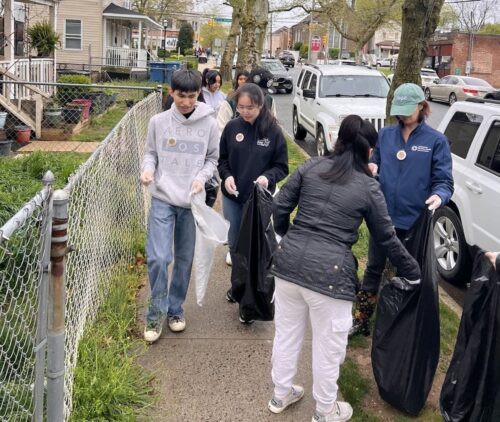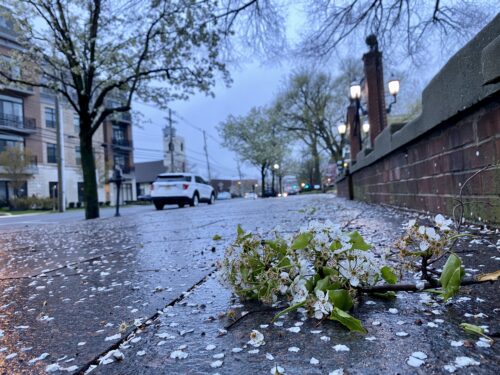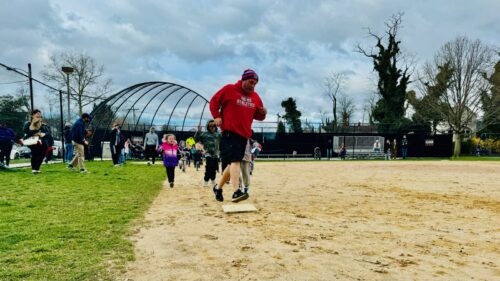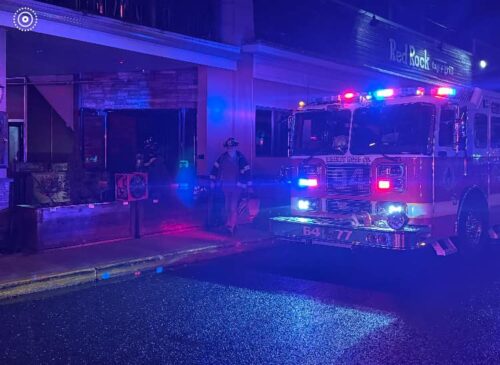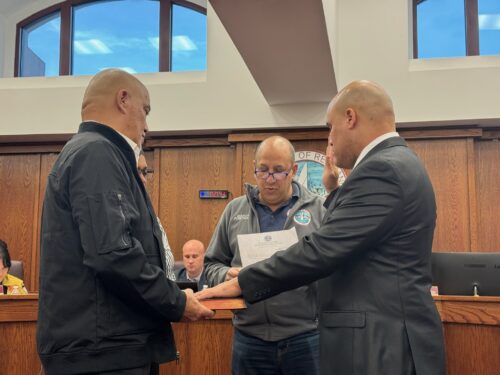
By JOHN T. WARD
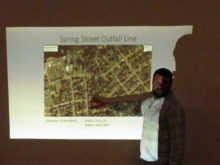

A testing program powered in part by a “citizen science” volunteer squad and bacteria-sniffing dogs has “had an impact at a very rapid rate,” Bill Heddendorf, a scientist with the state Department of Environmental Protection, said at a meeting of an initiative dubbed ‘Rally for the Navesink‘ last Thursday at Bingham Hall.
Working with local government utility departments to address apparent sources of human-related fecal coliform, such as a break in a sewage line in Red Bank, “we’ve definitely made some meaningful corrections,” Heddendorf told the audience of about three dozen listeners. “The water quality is improving, and it’s improving at an extremely rapid rate.”
A 566-acre expanse of river closed to shellfishing in late 2015 because the health threat from the bacteria could even be reopened a year ahead of its target date of 2020, he said.
The “rally,” an effort led by Clean Ocean Action to get environmental groups and government agencies working to address the issue in a concerted manner, “is working,” COA founder Cindy Zipf told redbankgreen. “We’re tracking and finding and fixing sources” of pollution.
The citizen program, in which volunteers gather river and sewer samples at designated stations every Wednesday morning, had been scheduled to end in 10 weeks, closing out a year of operation. But the DEP has decided to continue supporting it for another year, said Heddendorf.
In addition, the consortium is also planning to bring specially trained bacteria-sniffing dogs back to the area to help with the tracking efforts, Zipf told the audience.
Meantime, new challenges have arisen. Sampling has identified fecal increased levels of fecal coliform in the vicinity of the Oceanic Bridge on the Rumson side, Heddendorf. One of several new testing stations will be established there in an effort to determine the source.
New testing spots will also be desginated near Barnacle Bill’s restaurant in Rumson; near the Shrewsbury Yacht Club in Fair Haven; and at the western terminus of Locust Avenue in Red Bank, adjoining the Swimming River, he said.
Heddendorf also reported “some elevated levels” on the Spring Street storm sewer line where more focused testing and the use of the dogs would be helpful, he said.
Clean Ocean Action and the Rumson Environmental Commission plan to host a ‘Two River Ecofest,’ featuring educational displays, music, food and kids’ events, to be held Saturday, June 2, at Victory Park in Rumson. The rain date is June 3.



